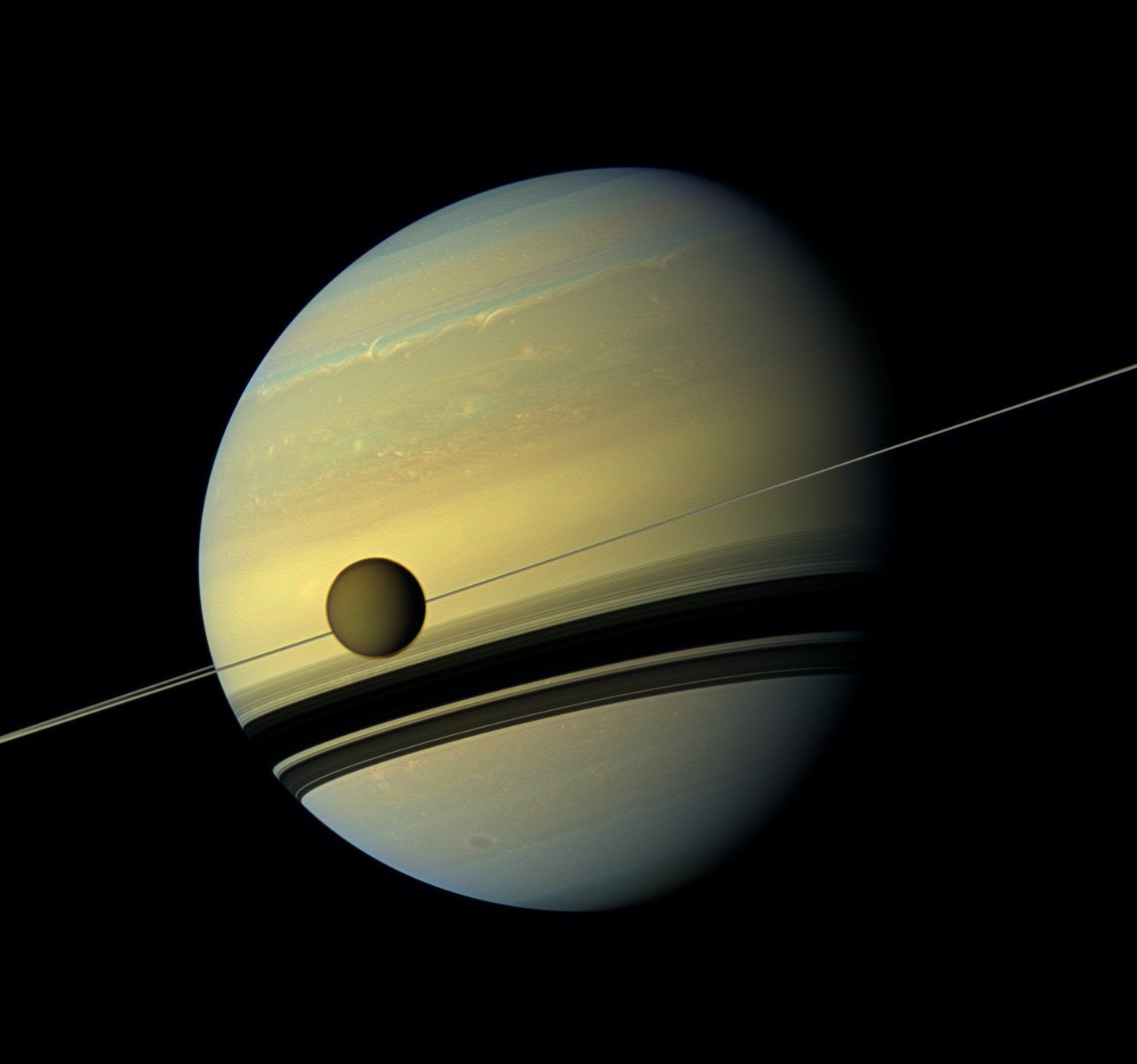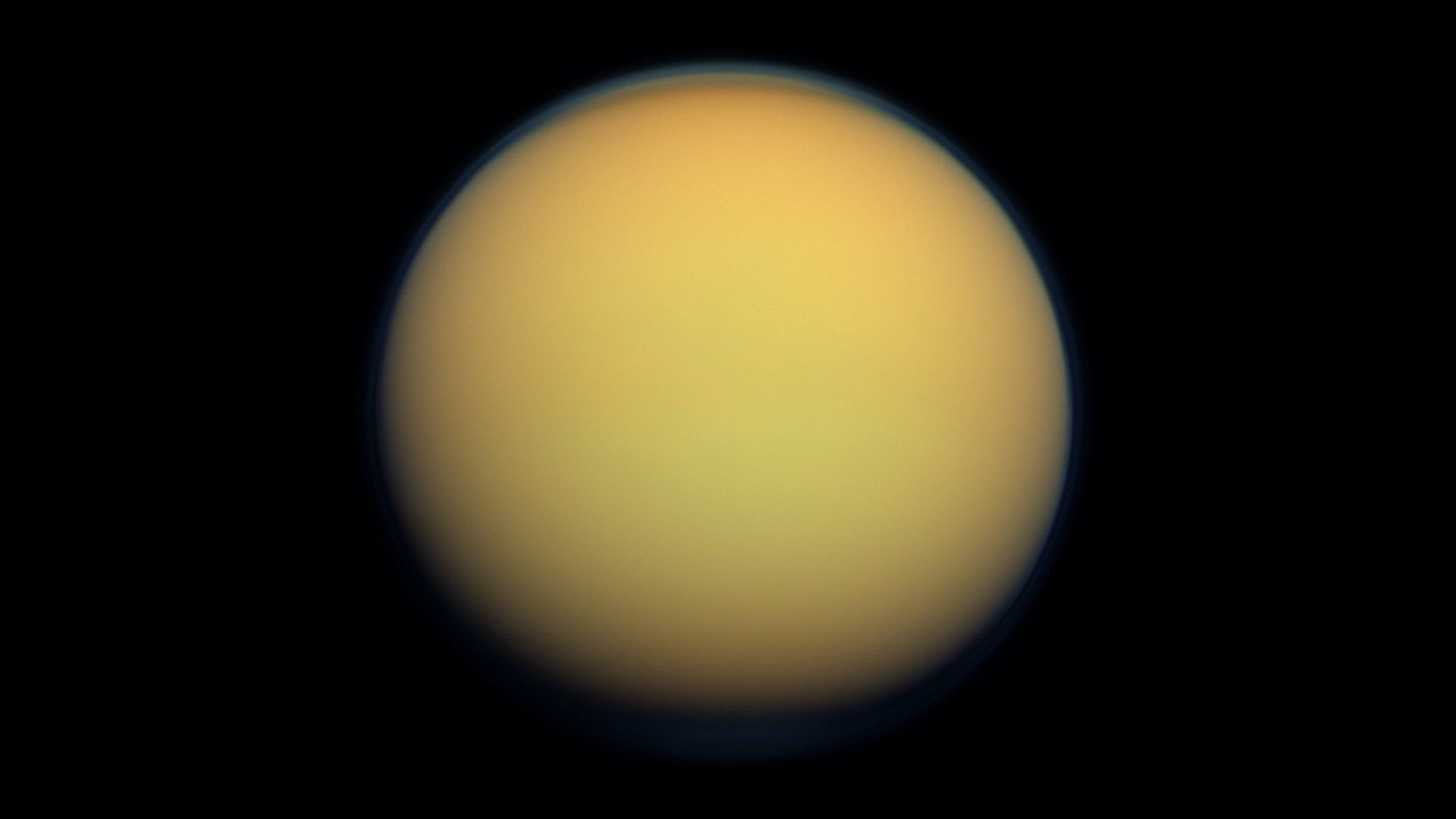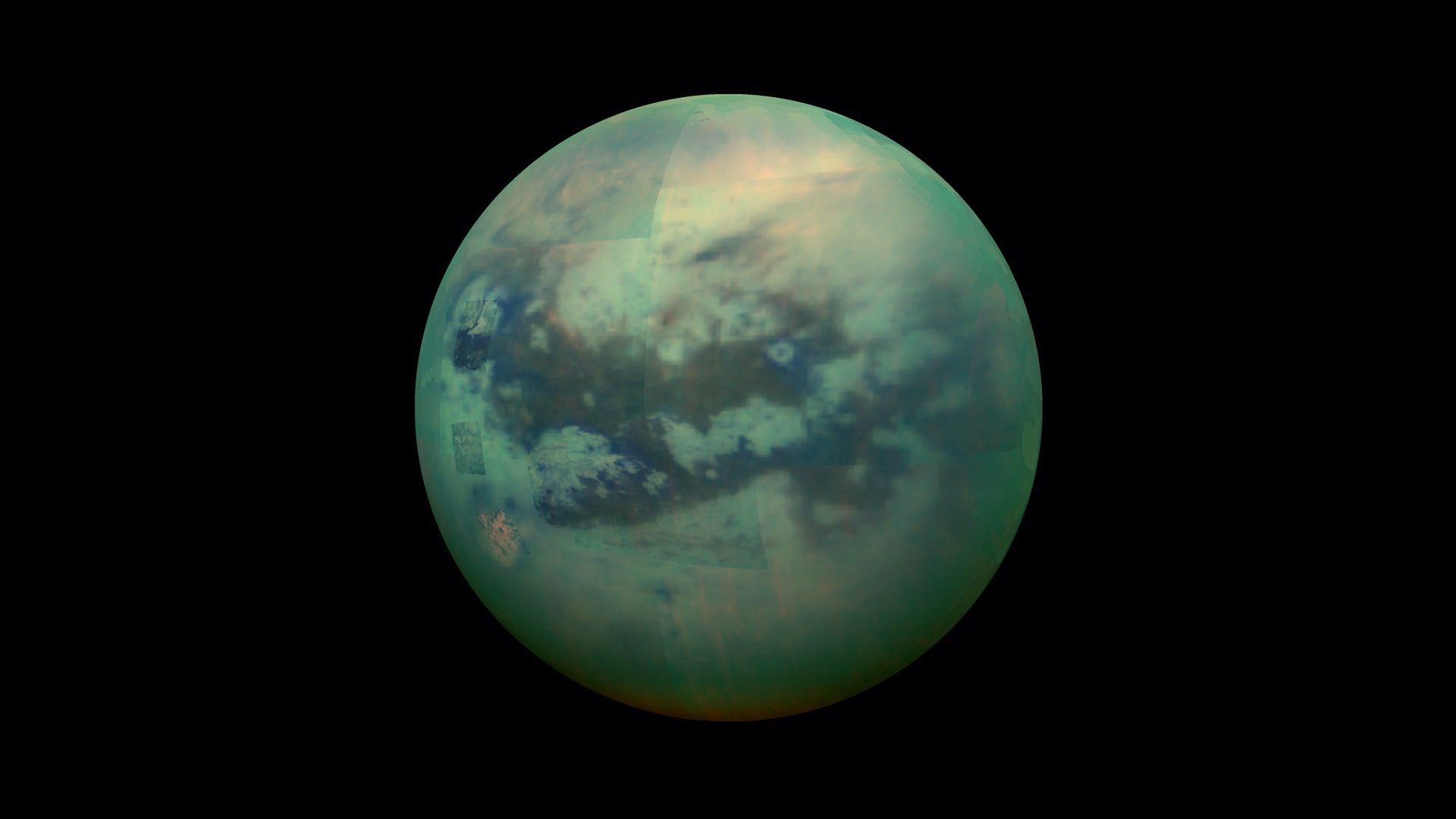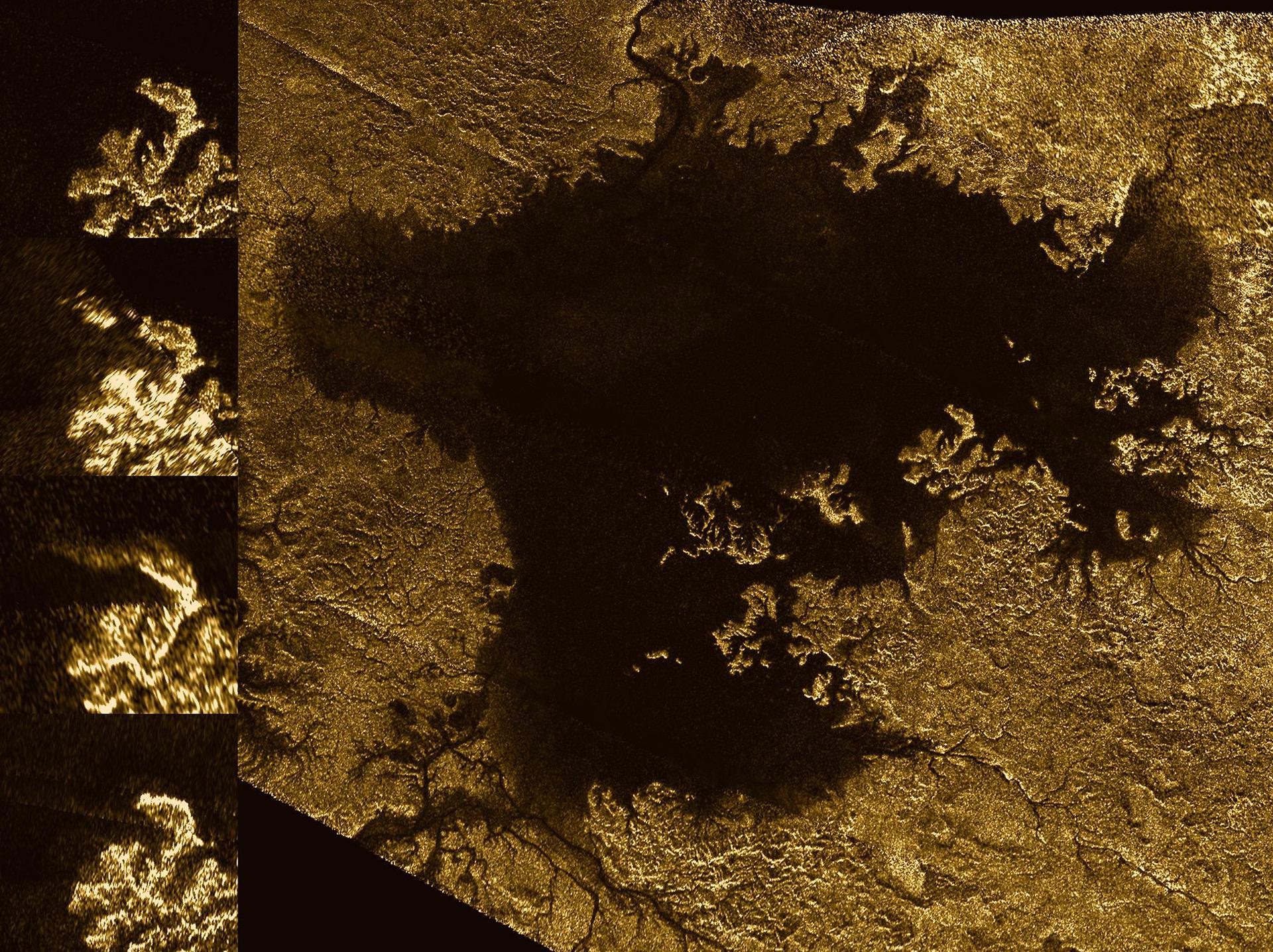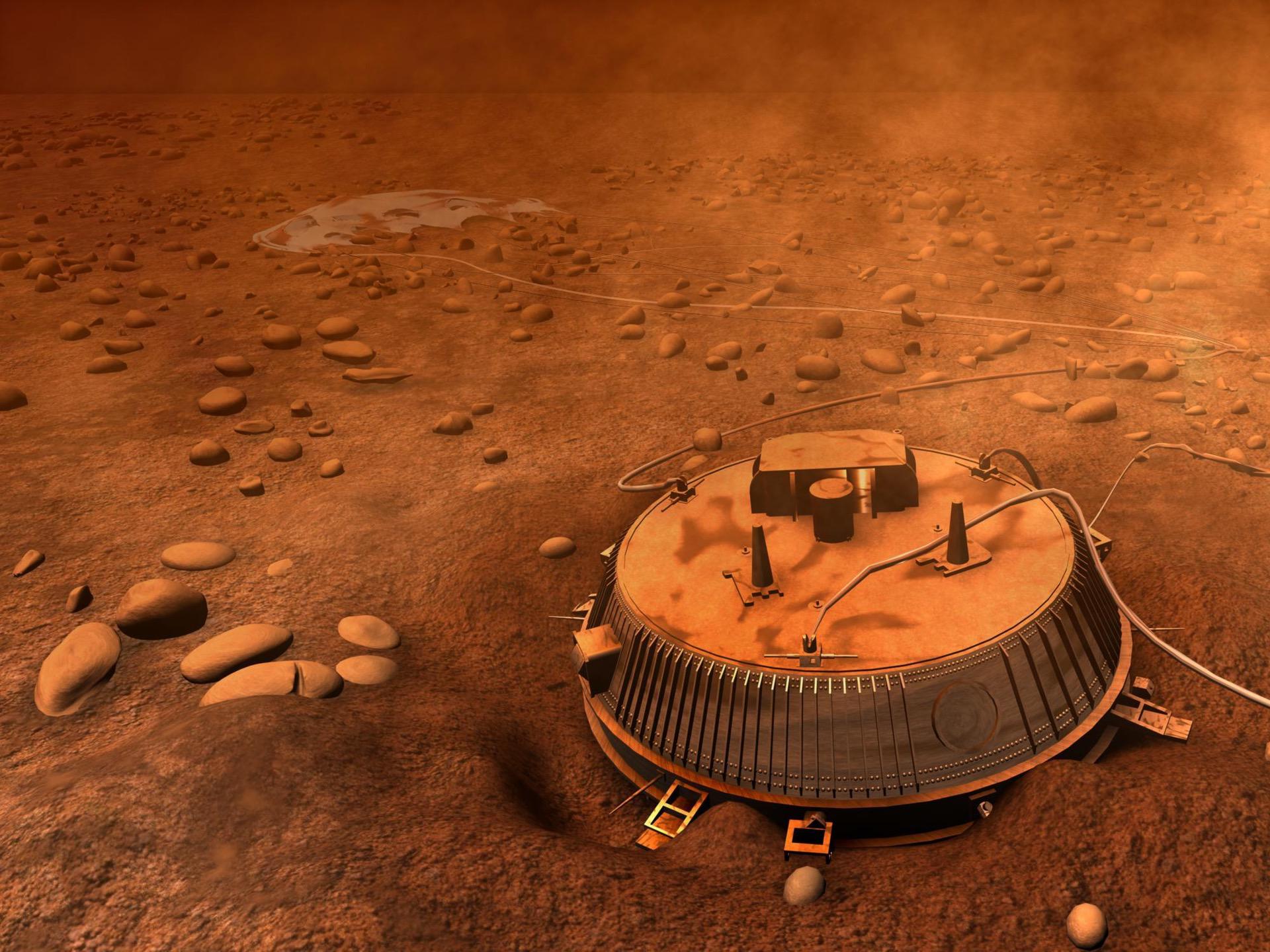This web page is created within BALTICS project funded from the European Union’s Horizon2020 Research and Innovation Programme under grant agreement No.692257.
Titan
Saturn’s largest moon is Titan, which is about 5,100 kilometers in diameter. It is the second largest moon in the solar system. The size of the Titans is surpassed by Jupiter’s moon Ganymede.
Titan’s orbit is about 1.2 million kilometers from Saturn. Titan makes one orbit around the ringed planet in little less than 16 days. At the same time, it revolves around its axis, so the same side of the moon is facing Saturn.
Titan’s core, more than 3,000 kilometers big, is made of hard rocks. It is surrounded by a layer of crystalline ice, over which there is liquid water and an ocean of ammonia, over which again a layer of ice.
Titan is the only moon in the solar system, surrounded by several hundred kilometers of thick and dense atmosphere, which consists mainly (98.4%) of nitrogen mixed with methane, ammonia and other compounds. Under the influence of ultraviolet radiation from the sun, methane decomposes in the upper layers of the atmosphere and various hydrocarbons are formed as a result of chemical reactions, which give Titan’s atmosphere an orange tone. Atmospheric pressure on the surface of Titan is 1.45 times higher than on Earth at sea level.
Saturn’s largest moon receives only 1% of its sunlight reaching the Earth. Much of the energy is absorbed into the atmosphere and the surface of Titan reaches only 0.1% of the light received by the Earth.
As the surface temperature on Titan is about -180oC, the water there forms a rock–hard ice. It forms both grains of “sand” around the equator and smaller and larger mountains. Although it does not seem possible to have liquid on the surface of the moon under such conditions, rivers, lakes and even precipitation of liquefied methane, ethane and other simple hydrocarbons have been discovered on Titan. On Titan, like on Earth, a liquid exchange cycle takes place, where hydrocarbons evaporate, condense in the atmosphere to form clouds, which then fall as precipitation and concentrate in rivers, lakes and seas, mostly in the polar regions.
Closer to the equator, Titan’s surface is covered with fields of huge frozen water and hydrocarbon dunes, where the “sand” grains are driven by the wind. The dunes are huge – in width they can reach up to 2 kilometers, but in height more than 100 meters.
The circulation of liquid on Titan is also affected by the seasons – summer or winter, where each lasts about 7.5 Earth years.
